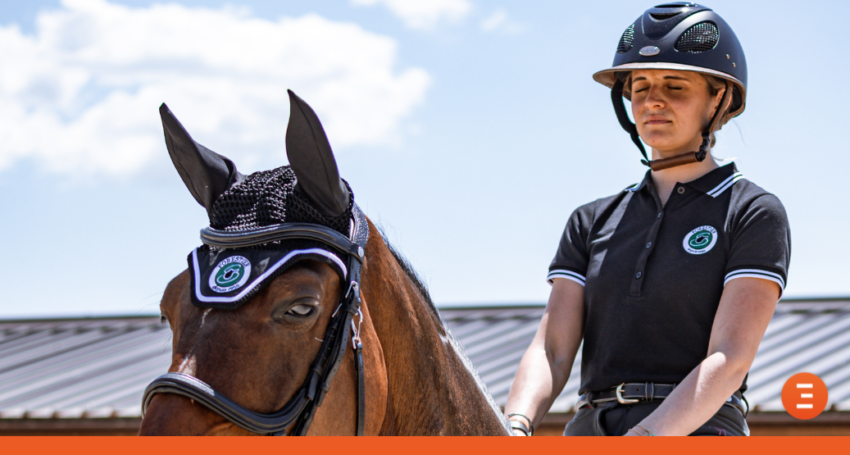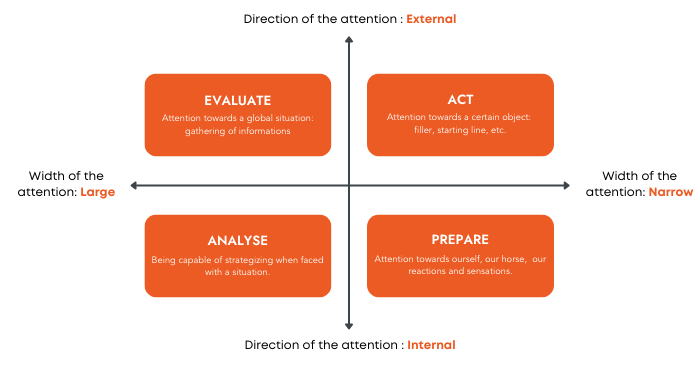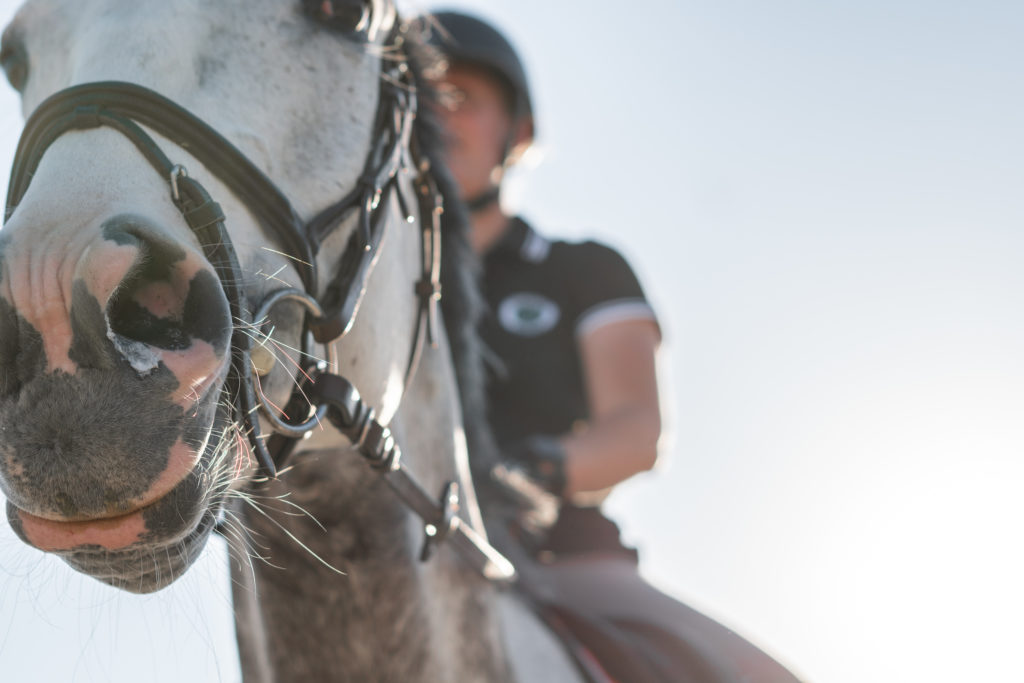
Concentration, a key to mental preparation
“Stop talking!“ “Focus!” “If you were more concentrated you could have avoided that pole”. How many times have you heard your coach say those words?
Concentration is a difficult skill to master. To perfect this skill, you have to work on it, again and again, for it to become a habit. It is key to mental preparation, a cornerstone after physical and technical work. In this article we will unveil our techniques in order to master your concentration for a successful mental preparation.
Table des matières
1. How concentration works
Whether at a competition or during training, it can be hard to not let yourself get distracted by your surroundings: a horse coming in, dogs, the speaker… Your concentration can be unstable and not be there when you need her. You may be able to focus for a moment and then lose it after a refusal.
Being alert is essential to concentration, it allows you to evaluate any changes and mobilise any resources you might need to react. Your attention and direction become key words of this mental skill that is concentration. Have you ever heard the expressions “internal attention” or “large attention”? We’ll explain all of these in today’s blog article, and how it can help you in your mental preparation.
2. Distractions
No matter the situation, there will always be distractions ready to interfere with your concentration. There are two types:
Internal distractions:
- Bad experiences: a bad fall, a refusal during your last training session
- Consequences: your horse refusing to jump any fence, not managing to get qualified for the next step of a competition
- Internal talk: tiredness, pain, technical mistakes
External distractions: noise, the hustle and bustle of events…
3. Improving your concentration
To get your concentration under control and become immune to any distraction, there are different techniques:
The FLOW state:
It is a state in which your concentration is in full drive. In this state, you feel like you can overcome anything, you are completely immersed in your activity.
Static concentration: establishing a framework
Before your training session of your competition, take the time to isolate yourself in a calm environment for 10-15 minutes. This will be useful to focus on your goals. The place you choose is important, you have to be sure that you won’t be disturbed during the exercise.

4. Developing your concentration in 3 steps
In addition to keeping any distractions at bay, you can work on your concentration on focusing on one of the 8 keys of mental preparation. They are all intertwined, which means that when you work on one key in particular, you are also working on the others. Today, we are focusing on 3 particular keys:
- Projecting your performances with mental imagery
How can you use mental imagery to improve your performances? Divide your course in a multitude of smaller steps. Instead of getting overwhelmed when you look at it as a whole, it will help you to deal with each section individually. You could, for example, divide your course into 3 to 4 sections of 3 or 4 obstacles. This would help for a better distribution of your concentration but also improve your tactics. Of course, you can also apply this method to a dressage test.
- Set goals:
For any sportsperson (rider or not), setting goals is absolutely essential. It gives intention and meaning to your behaviours, and allows you to stay motivated.
To improve your concentration during a training session, set 1 or 2 goals in the Equisense exercises. This will allow you to define the framework and the skills you will work on.
Warning: don’t focus too much on ONE technical goal, as you could risk deteriorating others.
- Directing your attention: Nideffer’s model
Once you have set goals and done a little (or a lot) of mental imagery, you still have to set your attention. On your course, unexpected events may happen, and they could interfere with your concentration. This is why the direction of attention can be useful.
Nideffer’s model is an excellent tool to evaluate and set concentration goals as soon as you enter the ring.

There are two axis, direction (internal or external) and width (large or narrow).
– Internal direction: you pay attention to what is happening inside of you (emotions, tactics, feeling…)
– External direction: you pay attention to what is happening on the outside, your horse and the arena (the crowd, places that can spook your horse)
– Narrow width: you focus specifically on one or two items (for example: the obstacle in front of you and the next)
– Large width: you pay attention to numerous factors (the fences’ fillers, the next horse that enters into the arena, a dog that could interrupt during your course)
Conclusion
Concentration is a complex phenomena that requires work: knowing how to deal with distractions, setting goals, defining the direction of attention for each exercise… The common denominator between these methods? Regularity. As they become habits, these methods will allow you to optimise your work and move more quickly through your goals.
This is why mental preparation is the last step after focusing on the physical and technical aspects.

📚 Learn more: A typical week of preparation for a competition